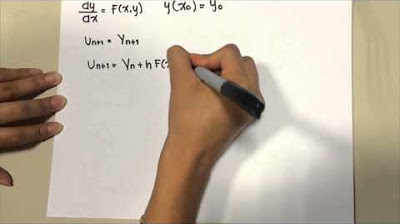Sucrose Density Gradient Centrifugation
Summary
TLDRThis video, provided by Creative Biomart, delves into two centrifugation methods: differential and density gradient. It explains how differential centrifugation separates particles by varying speeds, while density gradient centrifugation uses sucrose solutions to separate particles based on density differences. The script covers the preparation of sucrose gradients, the centrifugation process, and the subsequent separation and purification of particles, highlighting its application in protein and organelle separation. For further inquiries, viewers are directed to contact Creative Biomart.
Takeaways
- 🔬 The video script discusses two main types of centrifugation: differential centrifugation and density gradient centrifugation.
- 🌀 Differential centrifugation involves increasing the speed gradually to separate particles with different sedimentation coefficients.
- 🧪 Density gradient centrifugation is more complex and requires the addition of a gradient to separate particles of different densities.
- 🏷️ There are two subtypes of density gradient centrifugation: rate zonal and isopycnic centrifugation, each serving different separation purposes.
- 📉 Rate zonal centrifugation uses a gradient to separate particles of similar density but different molecular weights, such as proteins.
- 🔼 Isopycnic centrifugation separates particles based on their density differences, often using cesium chloride as a gradient.
- 🛠️ Sucrose is a common solution used in density gradient centrifugation due to its stability and ease of separation.
- 💧 A 66% sucrose solution is prepared first and then diluted to other concentrations for different experimental needs.
- 🧊 Gradient preparation is crucial and should be done using cold solutions to minimize diffusion before use.
- ⚖️ Balance is important during centrifugation, and a pre-experiment is necessary to determine the appropriate centrifugation conditions.
- 🔬 After centrifugation, samples form bands at different positions in the gradient based on their sedimentation coefficients.
- 🚰 Purification of the separated fractions is necessary, which should be tailored to the characteristics of the particles of interest.
Q & A
What are the two main parts of the video content on sucrose density gradient centrifugation?
-The two main parts of the video content are an introduction to centrifugation types and an explanation of the operation process of sucrose density gradient centrifugation.
What are the two common centrifugation methods mentioned in the script?
-The two common centrifugation methods mentioned are differential centrifugation and density gradient centrifugation.
How does differential centrifugation work?
-Differential centrifugation works by performing centrifugation at different speeds to separate particles with different sedimentation coefficients. It is suitable for separating particles with large differences in size and density.
What is the difference between rate zonal centrifugation and isopycnic centrifugation?
-Rate zonal centrifugation separates particles of similar density and different molecular weight, while isopycnic centrifugation separates particles based on their density, regardless of their shape or size.
What are the characteristics required for the gradient solution used in rate zonal centrifugation?
-The gradient solution used in rate zonal centrifugation should have good chemical stability, low osmolarity, high refractive index, easy separation, and low cost.
Why is sucrose a common solution used in density gradient centrifugation?
-Sucrose is a common solution used in density gradient centrifugation because it has a high density range, is chemically stable, and can be easily separated from the particles after centrifugation.
What is the key step in sucrose density gradient centrifugation?
-The key step in sucrose density gradient centrifugation is gradient preparation, which involves creating a solution with varying concentrations of sucrose to separate particles based on their sedimentation coefficients.
How should the sucrose solution be prepared for gradient preparation?
-A 66% sucrose solution is prepared first and then diluted to other desired concentrations. The solution should be filtered, and a refractometer is used to verify the sucrose concentration.
What are the considerations when adding higher concentrations of sucrose solution during gradient preparation?
-When adding higher concentrations of sucrose solution, the tip of the pipette should be placed at the bottom of the centrifugal tubes without disturbing the interface between the layers, and a cold solution should be used to avoid premature diffusion of the gradient layers.
How can the separated particles be collected after sucrose density gradient centrifugation?
-The separated particles can be collected either from the bottom up using a gradient fractionator or from the top down using a pipette.
What is the purpose of dialysis after the separation step in sucrose density gradient centrifugation?
-The purpose of dialysis is to further purify the fraction obtained, which is a mixture of sucrose solution and the particles of interest, by removing the sucrose and concentrating the particles.
Outlines

此内容仅限付费用户访问。 请升级后访问。
立即升级Mindmap

此内容仅限付费用户访问。 请升级后访问。
立即升级Keywords

此内容仅限付费用户访问。 请升级后访问。
立即升级Highlights

此内容仅限付费用户访问。 请升级后访问。
立即升级Transcripts

此内容仅限付费用户访问。 请升级后访问。
立即升级浏览更多相关视频

Difference Between Density Gradient Centrifugation and Differential Centrifugation

Método de Euler y Euler Mejorado

Optimisasi Statistika - Kuliah 6 part 1

4.3a Density and Composite Mixture (MJ16 P12 Q13) | AS Density | Cambridge A Level Physics

The Different Types of Separation Techniques - Lesson 1 (Chemistry)

Difference Between Density Gradient and Differential Centrifugation | Centrifugation
5.0 / 5 (0 votes)
